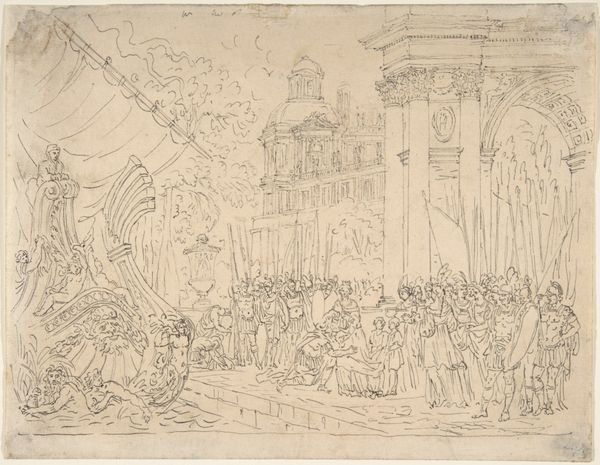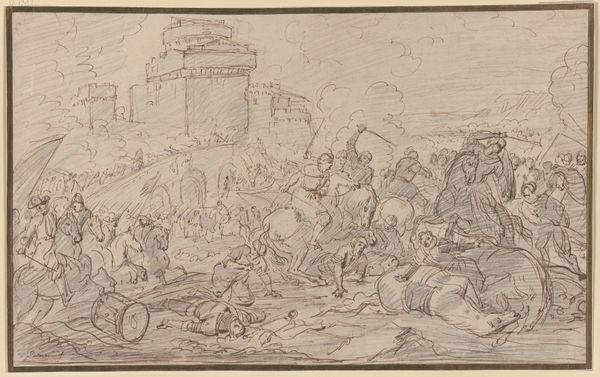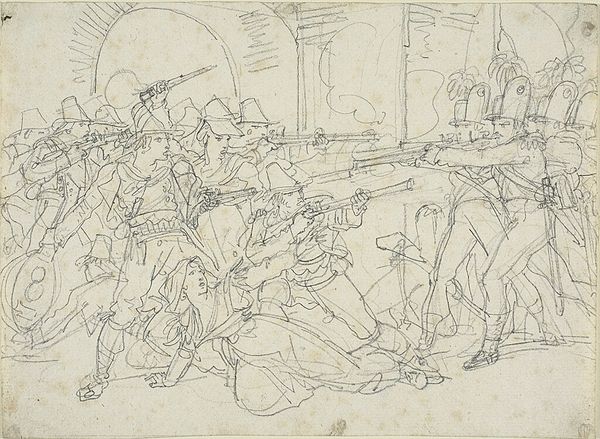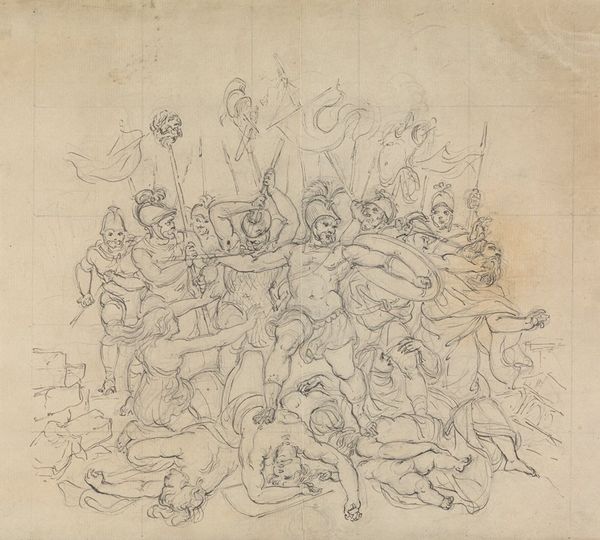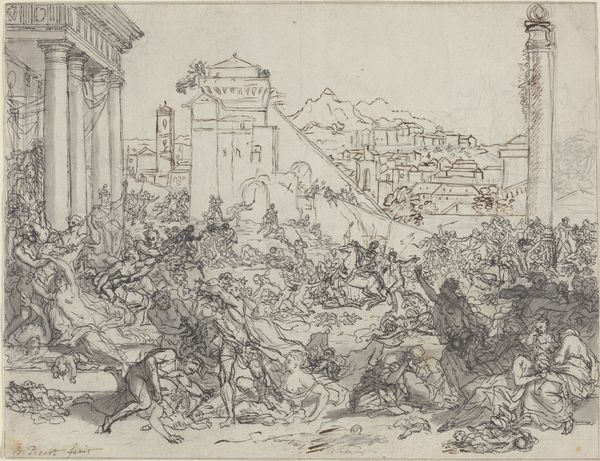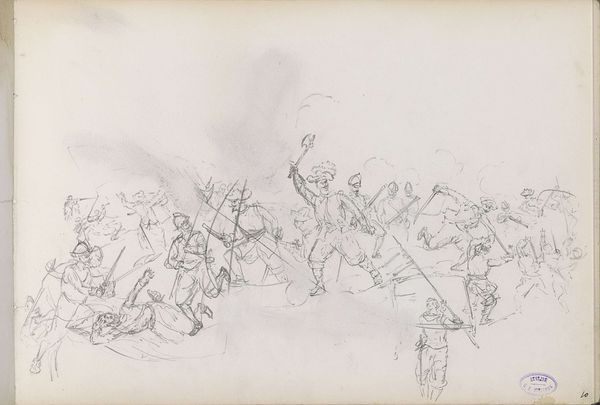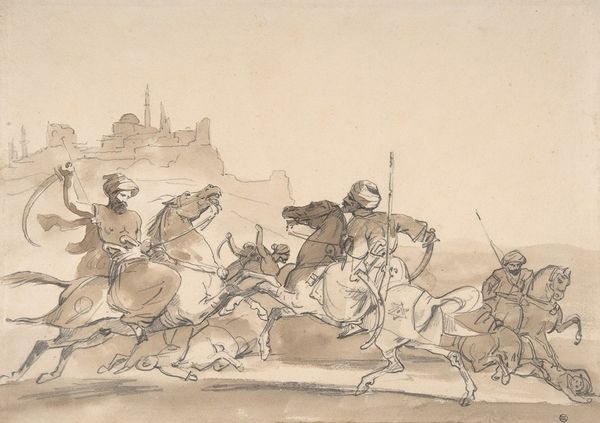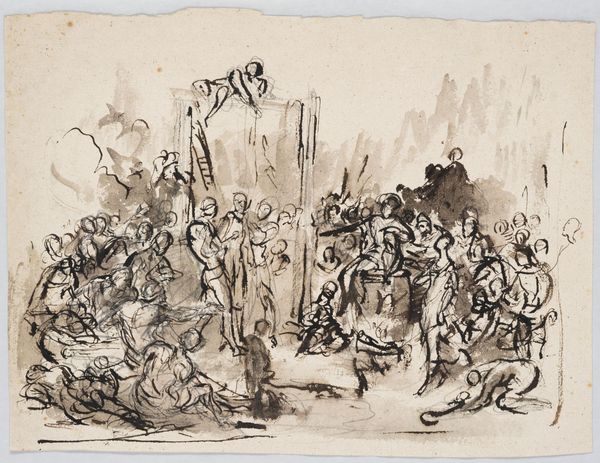
drawing, pencil
#
drawing
#
narrative-art
#
figuration
#
pencil
#
history-painting
#
academic-art
Copyright: Public Domain: Artvee
Curator: Robert Smirke’s pencil drawing, “Sketch of Goths Entering Rome, from Shakespeare’s Play, Titus Andronicus”, presents us with a flurry of raw, gestural energy. Editor: Chaos. Pure, unadulterated chaos. That’s my initial impression. A real sense of pandemonium erupting on the page. You can almost hear the cries and clashes of that Shakespearean tragedy! Curator: Exactly! Smirke captures that tumult with a masterful understanding of academic art's principles. Notice the linear perspective, drawing our eye into the composition. And how the classical architecture—a stylized representation of Rome—serves as a backdrop. Editor: It’s all lines and form, though, isn't it? You can tell it's just a sketch by its very nature. But I can also feel a clear vision towards academic artwork, one with carefully mapped composition, where dramatic focus creates all of that movement across the surface with a simple pencil and paper. Curator: Indeed. The material simplicity underscores the primacy of design. Smirke seems less interested in conveying a perfect rendering and is far more driven to communicate an essence. Observe how he balances the darker, more defined figures in the foreground with the fainter suggestions of those receding into the background, achieving depth with minimal means. Editor: This seems an exercise. Smirke tests here the relationship between form and function, focusing on the physical labor of creation. The immediacy of the pencil strokes captures not just a scene, but the act of visualizing narrative itself. The relative value of paper itself seems negligible! Curator: Absolutely. This work privileges line, allowing us to follow the choreography of bodies in conflict. We witness how he carefully structures space to enhance the theatricality, amplifying the underlying themes of violence and revenge from "Titus Andronicus." Editor: Thinking about materials and intention here makes the play between intent and impact very interesting. Was Smirke aware of how such limited material can also be capable of invoking violent impact on an observer through raw emotion? Curator: The beauty of it resides in the dynamism he achieves with so little. The artist gives only essential information, relying on our knowledge of classical structure to inform the rest of it, an idea itself worth contemplating given his context within theatrical productions, an art already of artifice and make-believe. Editor: Ultimately, the immediacy is powerful here. The rough marks offer raw engagement and unfiltered creativity. Curator: It presents us with classical theater from the lens of art that invites, challenges, and lingers, isn’t it? Editor: Absolutely, each choice echoes considerations beyond the surface image.
Comments
No comments
Be the first to comment and join the conversation on the ultimate creative platform.

